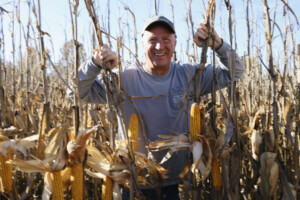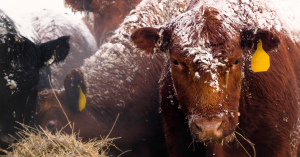This Week In Ag #138
Ever wonder why farmers grow the crops they do? There are a variety of reasons, some more obvious than others.
Market access is certainly a key driver. There’s no better example than in my home state of Illinois. Land as flat as a pancake. Rich black soil measured in feet, not inches. Where the world trades commodities and livestock futures. So you’re naturally thinking corn and soybeans. It’s true that the Prairie State is America’s top producer of soybeans and highest yielder of corn.
But did you know the Land of Lincoln is also the land of pumpkins? Illinois farmers grow 80% of our nation’s pumpkins. The central Illinois community of Morton is the “Pumpkin Capital of the World.” The main reason for their pumpkin prowess is due to a Libby’s processing plant, which opened there 100 years ago. Now, eight out of every ten cans of pumpkins are processed in Morton. Thousands of acres of farmland within a 50-mile radius of Morton are dedicated to growing those orange orbs.
So crops can follow processing plants. Likewise, processing plants can follow crops. Such is the case with ethanol. It should be no surprise that Iowa boasts the most ethanol plants in the USA, considering it also grows the most corn. Collectively, the top three corn-producing states (Iowa, Illinois and Nebraska) produce half our nation’s ethanol supply.
Another less-obvious factor for crop choice is topography. A great example of this is the area of Hatch, New Mexico, where the world-famous chili peppers are grown. These green delicacies thrive at an 4,000-foot altitude, combined with dramatic day and nighttime temperature swings.
Latitude has a great impact on crop choice. Cotton requires the longest growing season of any annually planted crop in the USA, requiring 150-180 days to mature. That’s why it’s a major crop in just 14 states, all within the southern US.
Moisture is an obvious driver. Kansas is known for wheat and sorghum, two crops with lower water requirements.
Then, of course, there is California. The Golden State’s unique climate produces over 400 crops that feed much of the world.
It’s important to note that, in the end, however, farmers are businesspeople. Some areas provide greater flexibility than others. But when given the opportunity, farmers will typically grow what offers them the greatest return on their land, equipment and labor investment.
Related Posts

This Week in Ag #31
#Harvest23 is here! If all goes well, I should be harvesting my corn plot this week. The beginning of fall brings excitement and optimism to the farm. But this year, those feelings appear tempered. Farmer sentiment dropped 8 points last month (according to the Purdue Ag Economy Barometer) as producers shared a dimming view of

How the “Three Sisters” Fed a New World
Discover how the Native American “Three Sisters” farming system, corn, beans, and squash, created a powerful, regenerative growing method that helped feed the New World and shaped sustainable agriculture long before modern science.

This Week in Ag #48
The popular TV series Yellowstone, along with the western lifestyle craze, has certainly romanticized ranching. It seems like everyone wants to be a rancher, until there’s real-world ranching stuff to do. This week’s bone-chilling Midwestern weather brings back memories. Notice I didn’t say fond memories. When you have livestock, they require care every day. Utility tractors

